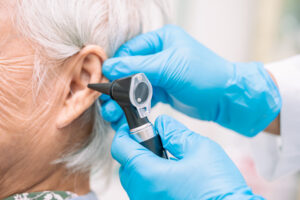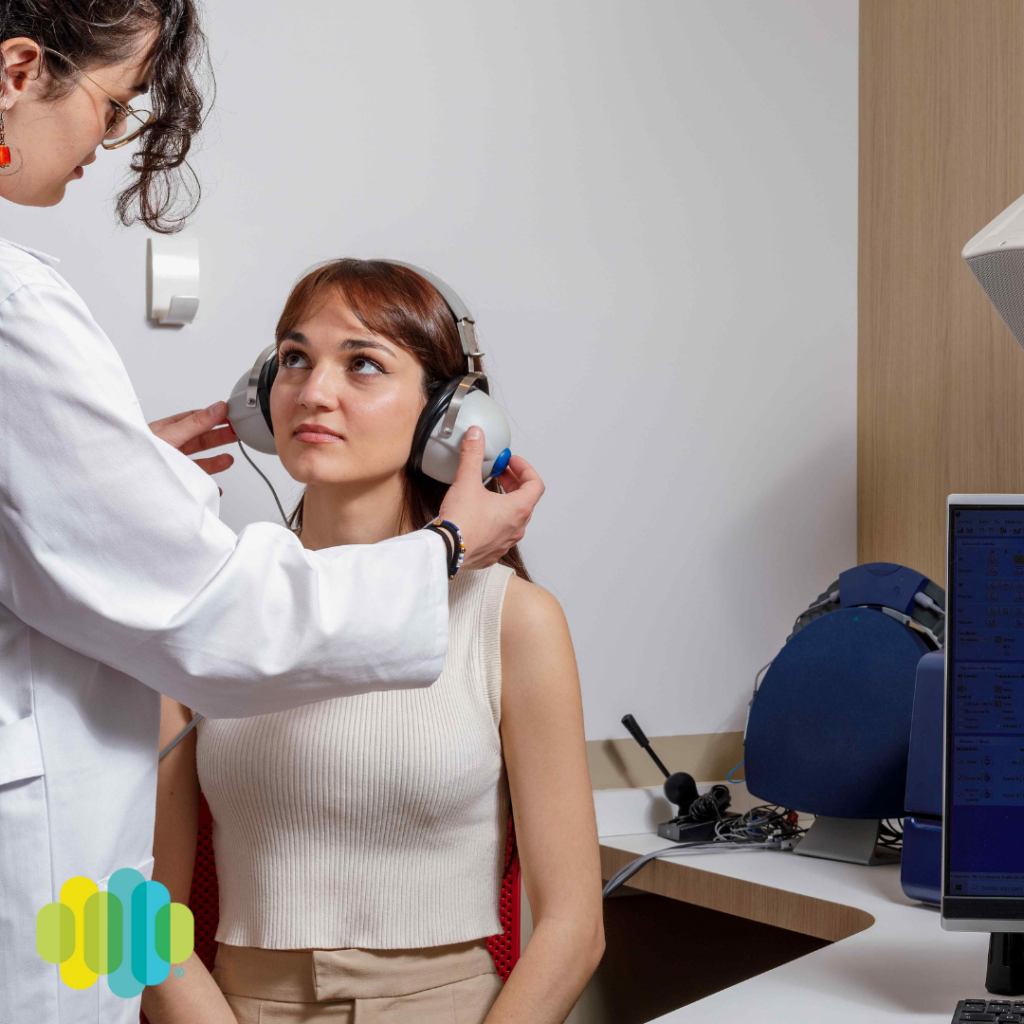As the global population ages, the need for new and innovative hearing aid technology has surged. As we know, hearing loss impacts millions of people when it comes to communication, mental well-being, and quality of life. Hearing aids are no longer just devices to amplify sound; they’re comprehensive tools for communication, health, and accessibility. In this blog, we’ll explore how hearing aids have evolved, examine the cutting-edge features redefining hearing health, review the latest research from 2024, and provide practical advice for choosing the right device.
Table of contents
- Evolution of Hearing Aid Technology
- Modern Innovations in Hearing Aids
- New Research in Hearing Health
- What to Consider When Choosing a Hearing Aid
Evolution of Hearing Aid Technology
Hearing aids have undergone many advancements over the past few decades. Initially, they were analog devices that simply amplified all sounds, often making it difficult for users to differentiate speech from background noise. These early models were bulky, limited in functionality, and often uncomfortable for extended periods of time.
The shift from analog to digital hearing aids marked a pivotal change, allowing for more precise sound processing. Digital hearing aids introduced features like background noise reduction and directional microphones, making it easier for users to focus on specific sounds and voices. These changes also allowed for hearing aids to be made smaller, more comfortable, and less noticeable.
In recent years, hearing aids have integrated connectivity features, enabling users to link their devices to smartphones, televisions, and other electronics. These technological advancements have helped to improve users’ quality of life, making it easier to stay socially connected, enjoy entertainment, and participate fully in daily activities. These advancements have paved the way for today’s modern technologies, which offer features that were once unimaginable.

___________________________________________
Modern Innovations in Hearing Aids
Artificial Intelligence (AI) & Machine Learning Integration
- Modern hearing aids now use AI-driven sound processing to adapt to changing sound environments, automatically adjusting settings for optimal hearing.
- Machine learning algorithms help the device learn user preferences, creating adaptive sound profiles and enhanced noise reduction tailored to individual needs.
Bluetooth & Wireless Connectivity Enhancements
- Improved Bluetooth technology allows for seamless pairing with smartphones, TVs, computers, and other devices, enhancing convenience and functionality.
- Features like audio streaming, app-based control, and hands-free calling allow users to adjust settings remotely and enjoy a more integrated audio experience.
Rechargeable Batteries & Extended Battery Life
- Advancements in battery technology provide longer-lasting devices, reducing the need for frequent replacements and improving reliability. This provides a significant benefit for users who rely on hearing aids throughout the day.
Invisible & Discreet Hearing Aid Designs
- Hearing aids are now available in smaller, less noticeable designs.
- Options for “invisible” or nearly invisible aids allow users who prefer discretion to wear them confidently in daily life.
Health & Fitness Tracking Features
- Some hearing aids are equipped with sensors that track health metrics, such as physical activity, heart rate, and even certain vitals, turning them into multi-purpose health devices.
Enhanced Sound Quality & Noise Management
- Advanced noise reduction algorithms deliver clearer sound quality, allowing users to stay comfortable in busy environments like restaurants or public gatherings.
- Directional microphones and speech enhancement features help isolate voices, improving clarity in conversations.
- Feedback cancellation ensures a natural listening experience by eliminating unwanted background noise.
While these innovations are transforming hearing aids, research is continuously pushing the boundaries of what’s possible in hearing health, with numerous advancements happening every year.

__________________________________________
New Research in Hearing Health (2024)
Regenerative Hearing Drug Trials (UCL & UCLH, March 2024)
In a recent study, researchers successfully completed a first-in-class trial of a regenerative drug aimed at restoring hearing. The study focuses on regenerating auditory hair cells in the inner ear, a crucial part of hearing. Although the results are promising nothing has been approved for clinical use and further research and evaluation is necessary.
New Insights into Ear Anatomy (University of Rochester, April 2024)
Researchers from the University of Rochester discovered previously unknown pathways in ear anatomy, unveiling potential new targets for hearing restoration therapies. This breakthrough offers promising avenues for developing new treatments that may improve or repair hearing by targeting these pathways. While these findings are exciting, a great deal more research is needed before the results can achieve effective treatments.
Technological Innovations by Apple (Apple Newsroom, March 2024)
In March 2024, Apple announced new hearing health features integrated into the AirPods Pro 2 and the upcoming AirPods 4. These updates are designed to improve accessibility and user experience and are a great example of how widely used consumer technology can be used to support hearing health and accessibility. Apple’s hearing features, however, still require rigorous testing and regulatory approval to ensure they meet safety and efficacy standards.
With these exciting advancements in mind, selecting the right hearing aid in 2024 requires careful consideration to ensure it aligns with your individual needs and preferences.

__________________________________________
What to Consider When Choosing a Hearing Aid in 2024
When choosing a hearing aid in 2024, several key factors should be considered to find the best match for your lifestyle and hearing needs.
- Lifestyle: Think about daily routines and the specific environments where hearing support is needed, such as workplaces, social gatherings, or outdoor activities.
- Budget: Evaluate the cost range, including options for financing or insurance coverage, to find a device that fits within your financial plan.
- Technological Preferences: Consider which features are essential, such as Bluetooth connectivity, AI-driven customization, or health-tracking capabilities, and which devices best match these needs.
- Future-Proofing: Opt for models with adaptable or upgradable technology to keep pace with future innovations, ensuring the device remains functional and effective over time.
As hearing research progresses, new therapies and technologies may further expand options for hearing health. For those considering hearing aids, consulting with a professional remains crucial for navigating the options and finding the best solution for your needs and lifestyle. Professionals provide invaluable insights into device selection, programming, and adjustments, helping to maximize the effectiveness of the device. A personalized assessment from a qualified Hearing Instrument Specialist can help you discover the most effective technology for your needs. Visit AHIP to locate a trusted practitioner in your area and take the first step toward better hearing!

__________________________________________
The Association of Hearing Instrument Practitioners of Ontario (AHIP) is a professional, non-profit organization that represents H.I.D. (Hearing Instrument Dispensers) and H.I.S. (Hearing Instrument Specialists) in Ontario. AHIP represents and guides its members in their practice in the best interest of the hard of hearing of Ontario. AHIP responsibly administers entry to practice, standards of practice and consumer complaint management. Hearing Instruments Specialists (H.I.S.) must be practicing members of AHIP in good standing in order to maintain authorizer status with the Ministry of Health, Assistive Devices Program.
__________________________________________
References
- UCL. (2024, March). World-first trial of regenerative hearing drug successfully completed. Retrieved from UCL News.
- University of Rochester Medical Center. (2024, April). An unexpected doorway into the ear opens new possibilities for hearing restoration. Retrieved from URMC News.
- Apple. (2024, September). Apple introduces AirPods 4 and a hearing health experience with AirPods Pro 2. Retrieved from Apple Newsroom.
- International Hearing Society (IHS). (2024, September). IHS conference took the lead in advancing hearing health. Retrieved from IHS News.
- Canadian Hard of Hearing Association (CHHA). (2024, September). My thoughts on hard-of-hearing representation in film and TV. Retrieved from CHHA.
- Hearing Review. (2023). Emerging trends in hearing aid technology for improved quality of life. Retrieved from Hearing Review News.
- National Institute on Deafness and Other Communication Disorders (NIDCD). (2024). Hearing aids: Types and new technologies. Retrieved from NIDCD.
- Audiology World News. (2024, January). AI and hearing aids: The next generation of personalized hearing solutions. Retrieved from Audiology World News.
- World Health Organization (WHO). (2024). Global report on hearing. Retrieved from WHO.
AHIP is not and shall not be liable for any of the views expressed by the authors or advertisers on the Signal Blogs. The authors’ opinions and the advertisers’ content do not necessarily reflect AHIP’s views.



